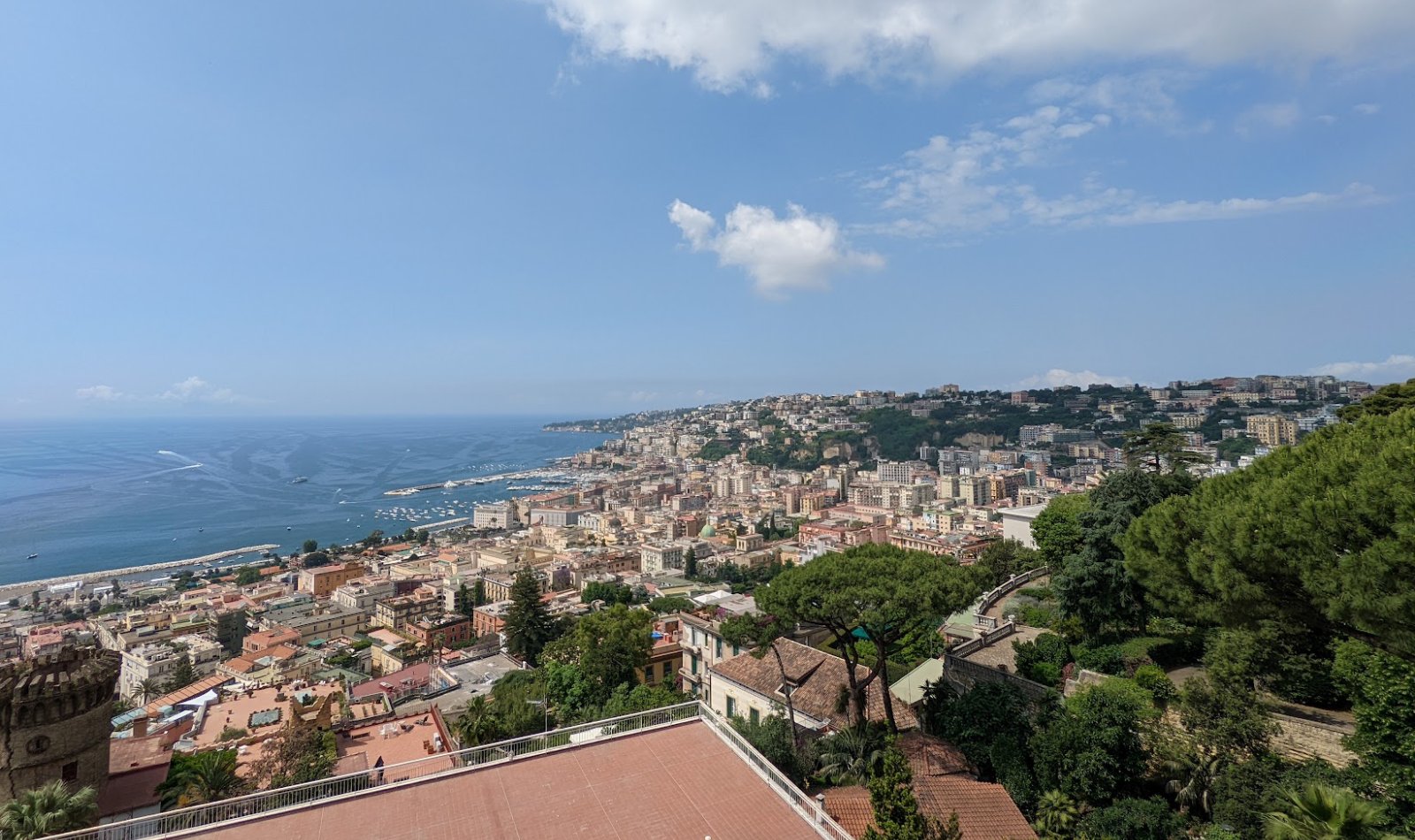In Naples there are countless artistic and cultural beauties to visit and many of them are ad free entry, so as to easily allow anyone to learn more about a part of the city's heritage.
It is museums, castles, parks, churches and other cultural historic sites where you can admire works of art, majestic halls or funerary monuments of famous people, like the Tombs of Leopardi and Virgil. Some of these places are symbols of Naples, like the Maschio Angioino and Castel dell'Ovo, but we can not even mention theBotanical Garden, Mother Museum and PAN.
In the following list you will find the things to see for free in Naples, for events remember to visit our section dedicated to Free Events in Naples.
Visit to the Fontanelle Cemetery
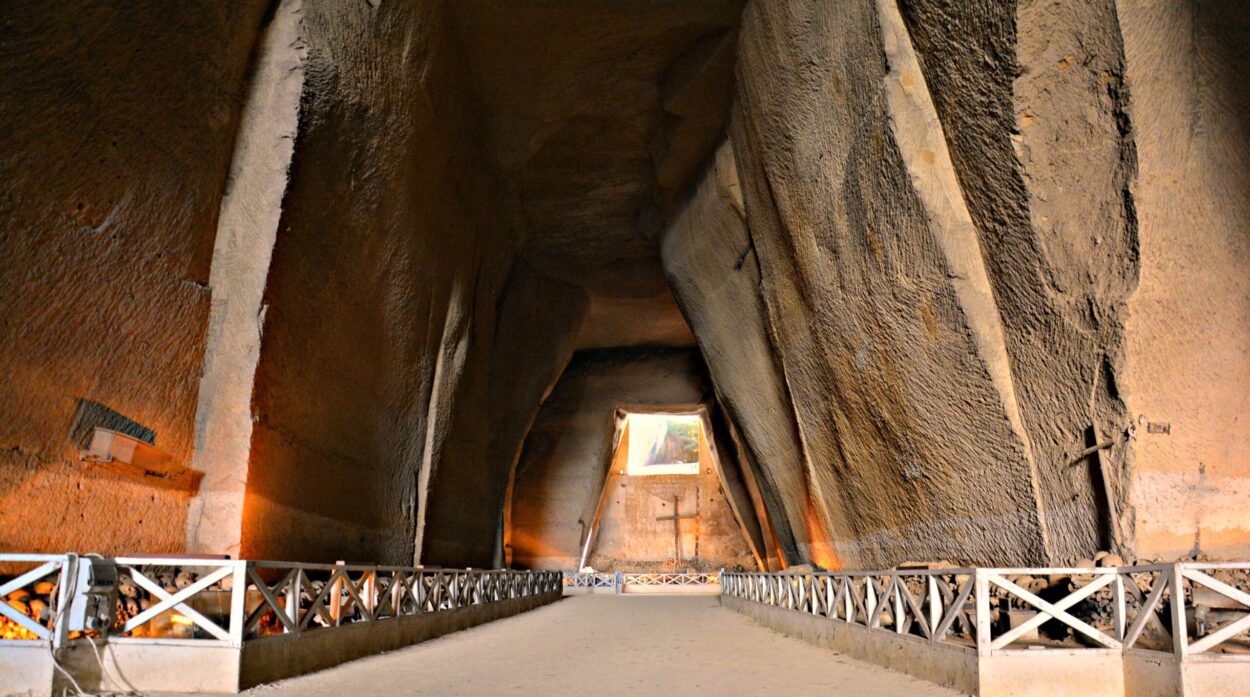
In the heart of the Sanità district of Naples, stands the Cemetery of the Fontanelle, a former ossuary that extends over an area of 3000 mXNUMX. A singular place that it holds the remains of around 40.000 people, many of them victims of historical epidemics such as the plague of 1656 and the cholera of 1836.
The entrance to the cemetery is price quotation, making this experience accessible to all. Furthermore, the site is equipped to accommodate visitors with disabilities, ensuring everyone has the opportunity to explore it.
The guided tours, available in multiple languages including Italian, English, French, Spanish and German, offer a deep immersion in the history and traditions of the place. During these visits, which last about an hour, it is possible to discover the chapels decorated with skulls and bones and immerse yourself in the cult of the "pezzentelle souls", the souls of the deceased without a worthy burial.
Tips for visiting
To fully enjoy the experience, it is recommended to:
- Wear comfortable shoes for walking.
- Consider your own predisposition to claustrophobia, given the underground nature of the site (although very large).
Orare and accessibility
Check the times as the area is often subject to closures!
- From Monday to Saturday: 10: 00 - 17: 00
- Sunday: 10: 00 - 14: 00
For further information, you can consult the official website: www.cimiterofontanelle.com.
Visit to Castel Nuovo (Maschio Angioino)
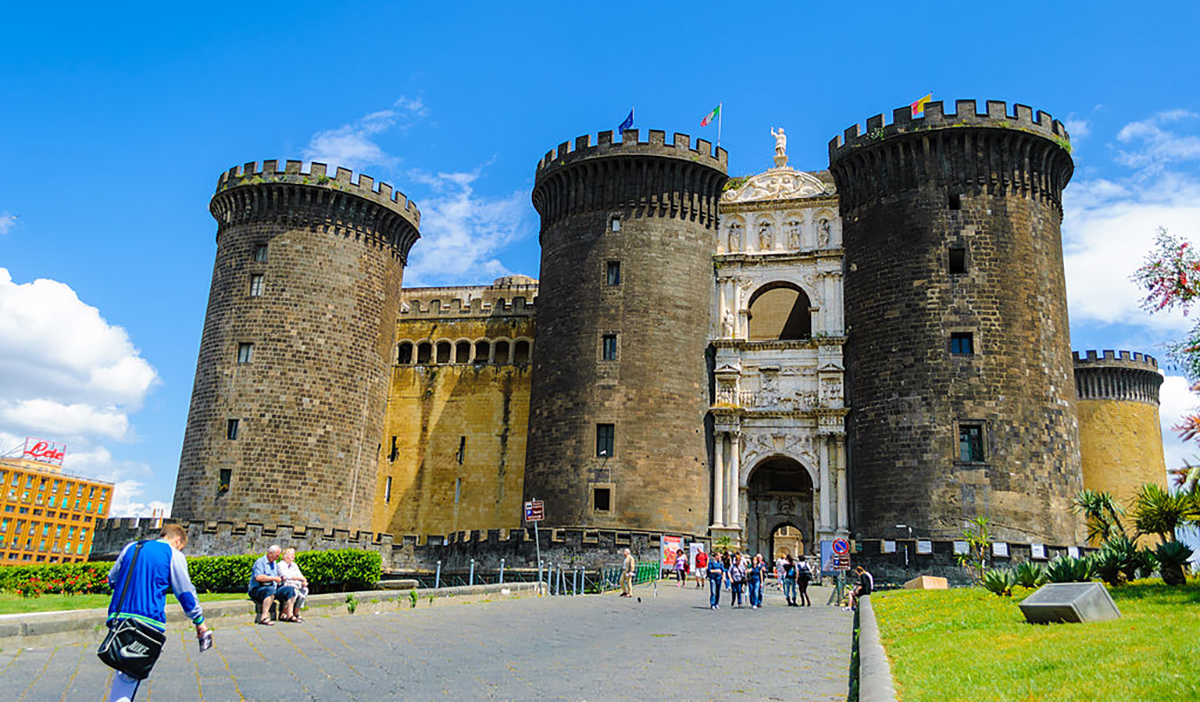
The Maschio Angioino, or Castel Nuovo, is one of the symbols of Naples and stands in Piazza Municipio. It's a medieval and renaissance castle created by Carlo d'Angiò in the 1266, but the works started only in the 1279.
Over the centuries it was home to several sovereigns and a fervid center of culture. It can be accessed for free every Sunday e on holidays and you can visit the Hall of the Barons, the archaeological route of the former Sala dell'Armeria, the Sala della Loggia overlooking the arsenals and the Monumental Courtyard. The Civic Museum, however, remains paid.
Cuseful tips for the visit to the Maschio Angioino
- Guided tours: Consider a guided tour to delve into the history and stories hidden behind the castle walls.
- Comfortable footwear: The castle may have uneven surfaces, so it is advisable to wear shoes suitable for walking.
- Photography: Don't forget your camera, but check internal photography policies, especially for use of flash or tripods.
- Climate: Depending on the season, prepare for hot or cold weather, as some areas may be exposed to the elements.
- Visiting time: Allow at least a couple of hours to explore the castle without rushing.
Advice on what to do after the visit
Take advantage of the castle's central location to explore nearby attractions, such as the seafront, Piazza del Plebiscito or the San Carlo Theater.
Piazza del Plebiscito
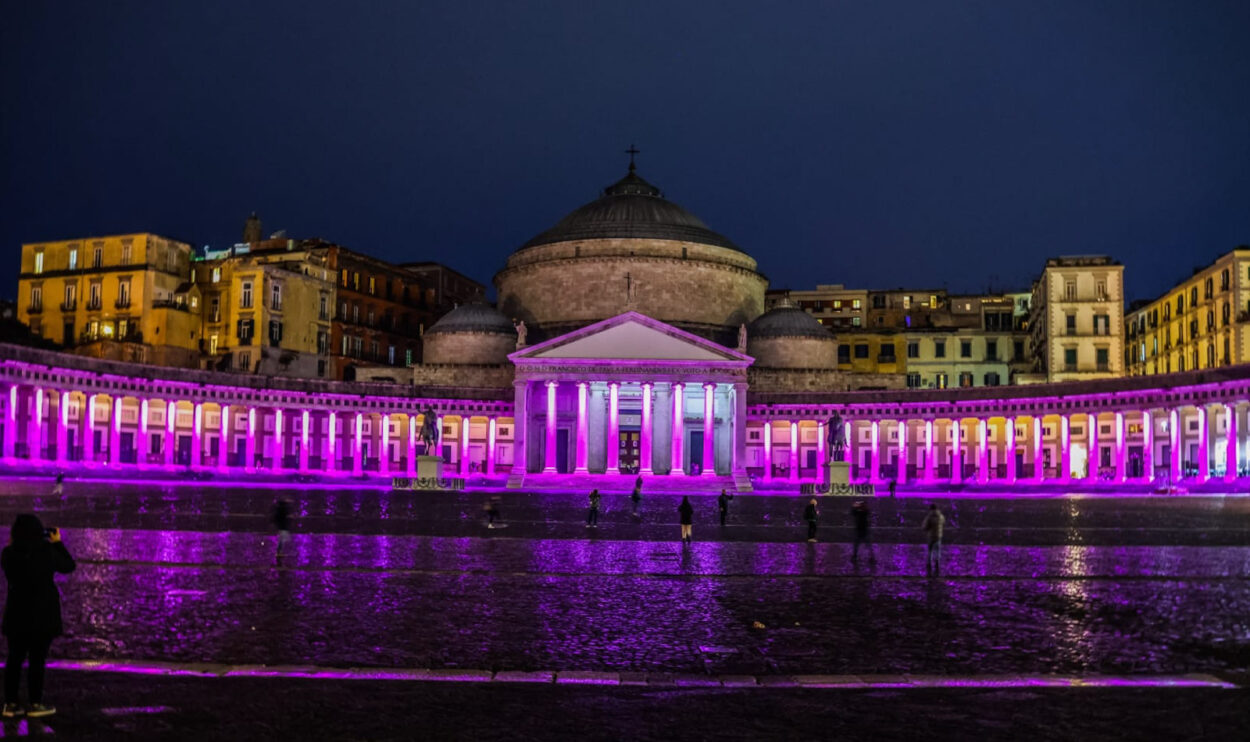
One of the largest squares in Europe, dominated by the majestic Basilica of San Francesco di Paola and the Royal Palace. Piazza del Plebiscito is one of the most iconic squares and imposing buildings of Naples, located right in the heart of the city. Characterized by a vast openness and majesty breathtaking, it is a place that enchants visitors with its architectural magnificence and its eventful history.
In the center of the square stands the Basilica of San Francesco di Paola, an imposing church with a dome similar to that of the Pantheon in Rome, which dominates the entire surrounding area. The Corinthian columns that border the square give an imposing grandeur to the place, while the Royal Palace, with its sumptuous facade and its sumptuous interiors, adds a touch of royalty and magnificence to the panorama.
Surrounded by historic buildings and monuments of great importance, like Palazzo Salerno and the Church of San Francesco di Paola, this open space has been the stage for numerous historical and cultural events over the centuries.
The challenge of Piazza del Plebiscito: crossing blindfolded
Did you know that there is a historic challenge that takes place in Piazza del Plebiscito? The challenge consists incross the entire square starting from the Royal Palace completely blindfolded managing to pass between the two statues with horses.
The myth that suggests crossing Piazza del Plebiscito blindfolded is linked to the two equestrian statues present in the square, depicting Charles III of Bourbon and Ferdinand I of the Two Sicilies. According to local legend, whoever manages to walk in a straight line from one statue to another blindfolded will be favored by luck.
To consider before your visit
- Better hours: To avoid the crowds, consider a morning or evening visit. The sunset light offers a magical view of the square.
- Events and events: The square often hosts cultural events and concerts. Check the programming for a unique experience.
Tips for visiting
- Photographic route: Don't miss the opportunity to capture architectural symmetry and sculptural details. The square is a true paradise for photography enthusiasts.
- Relaxing walks: Take advantage of the large space for a quiet walk, admiring the view of Vesuvius and the Gulf of Naples.
- Historic cafes: Take a break in one of the historic cafés around the square to savor the Neapolitan atmosphere.
After the visit
- A short distance away is the National Library of Naples
- In the same place you can visit the Royal Palace of Naples with its Court Theatre
- By stretching a little further you can reach the historic San Carlo Theater in Naples
- If you prefer to go shopping instead, continue along Via Chiaia or Via Toledo
Visit to the Castel dell'Ovo
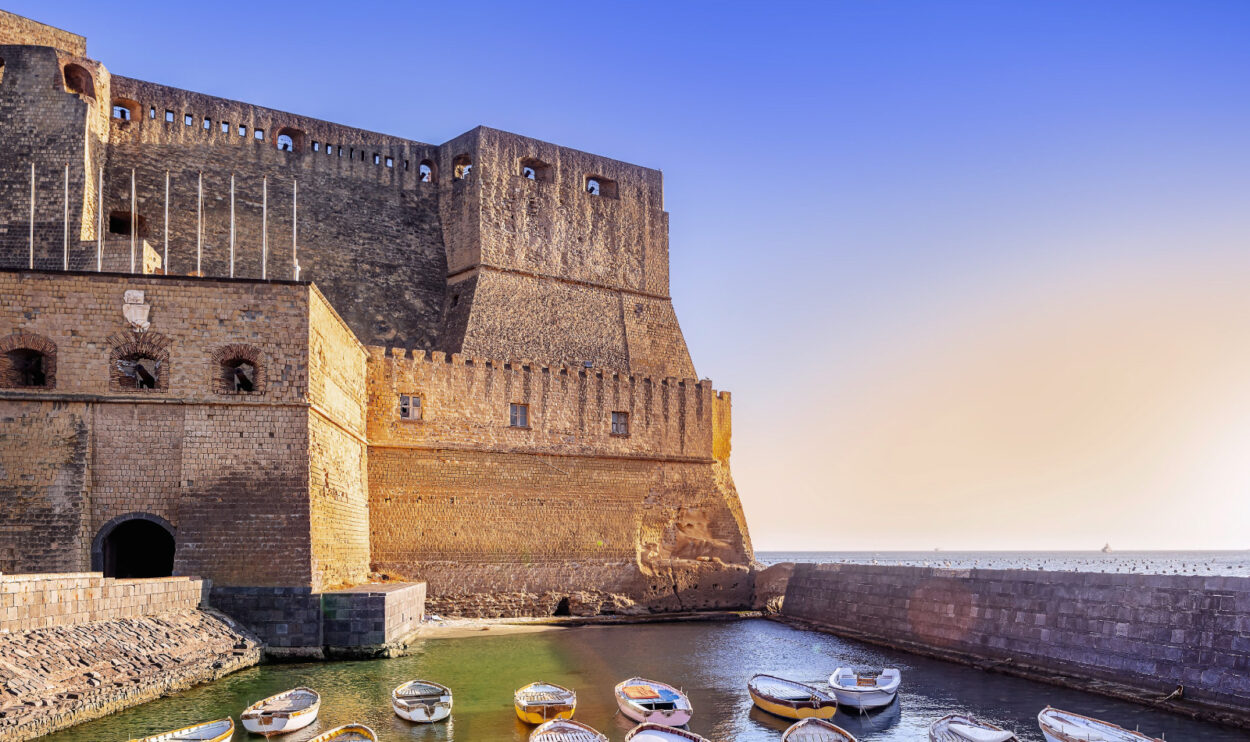
The Castel dell'Ovo rises on the ancient island of Megaride and stands out on the Gulf of Naples with its typical yellow color. And the oldest castle in Naples and its name derives from a legend according to which the poet Virgilio would have placed, in the dungeons, an egg that would have kept the structure forever standing.
From the terraces and terraces, where Spanish cannons are located, you can enjoy a beautiful panorama. In the castle there are the Maestra Tower e Norman, five rows of columns of the Roman villa of Lucullus, the cells of the monks dug into the rock and the remains of the church of the Savior. Admission is free every day, even in the case of temporary exhibitions.
Tips for visiting Castel dell'Ovo
Choose comfortable clothes and shoes suitable for walking, as the castle has various surfaces and stairs.
During the visit
- Exploration: Don't miss the panoramic points of the castle, from which you can enjoy breathtaking views of the Gulf of Naples and Vesuvius.
- Photography: Bring your camera with you to capture the beauty of the castle and its views. But check the rules on photographs inside.
- History and legends: Learn more about the history of the castle and listen to the stories and legends surrounding it, including that of the magic egg, to enrich your experience.
After the visit
- Borgo Marinari: At the end of your visit to the castle, explore the picturesque Borgo Marinari, located at the base of the castle, ideal for a walk or to enjoy good food in one of the many restaurants with sea views.
Where is it: Via Eldorado, 3 - 80132 Naples
Visit to the Madre Museum
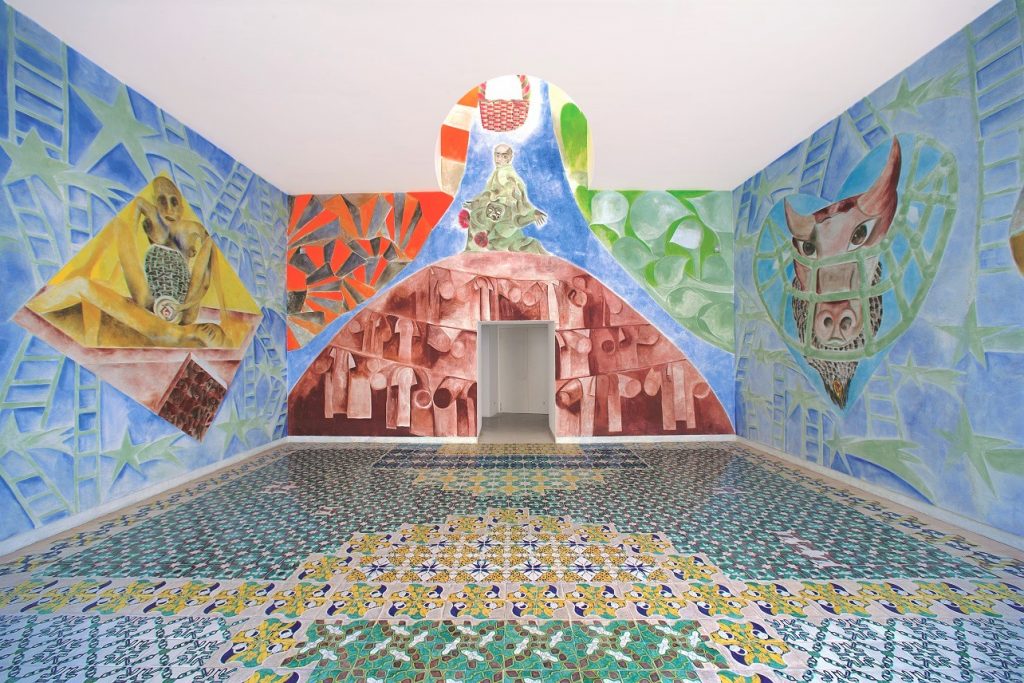
The first Sunday of the month (except interruptions) is the day of free entry to the Madre Museum (Donnaregina Museum of Contemporary Art), the structure of contemporary art par excellence in Naples which houses permanent and temporary collections.
Lucio Fontana, Carlo Alfano, Robert Mapplethorpe, Jeff Koons and Daniel Buren are among the most famous artists who have set up their exhibitions at the Madre.
The museum is very large, located in a nineteenth-century palace, consists of three floors and temporary collections are on the third, while permanent on the second.
Where is it: Via Luigi Settembrini, 79 - 80139 Naples
Botanical Garden

The Royal Botanical Garden of Naples was founded in 1807 by the French Giuseppe Bonaparte, who however created an idea of King Ferdinand IV of Bourbon. It can be visit for free every day and hosts 9000 plant species and about 25000 specimens.
The exhibition areas with flowers and plants are numerous and divided according to precise ethnobotanical criteria. They contain a palm grove, a citrus grove, the filiceto (with the ferns), the areas with desert and beach plants, the bog, the Mediterranean Macchia and the mangroves. There are also three greenhouses and the Experimental section of medicinal plants.
It is freely and free of charge open to the public from 9am to 00pm on Monday, Wednesday and Friday while it is open from 9:00 to 16:00, Tuesday and Thursday.
Sometimes the structure it is subject to maintenance and is therefore closed, we recommend checking that it is open on the official website before the visit.
Tips for visiting the Botanical Garden
Bring a bottle of water with you, especially in the warmer months, and wear comfortable clothes for a relaxing walk. If you are allergic, remember antihistamines!
Discovering the Garden
- Thematic itineraries: Follow the thematic routes to discover the different areas of the Garden, which include thematic gardens, exotic greenhouses and collections of rare plants.
- Biodiversity: Take advantage of the visit to learn more about biodiversity and the importance of conserving plant species.
- Photography: The Botanical Garden is the perfect place for those who love nature photography. However, remember to respect the garden rules, avoiding damaging the plants.
After the visit
- National Museum of Naples: after the visit, stretch out a little and reach the National Museum of Naples where you can visit the Egyptian section and the Alexander's large mosaic of the Battle of Issus.
Where is it: Via Foria, 223 - 80137 Naples
Tombs of Leopardi and Virgil
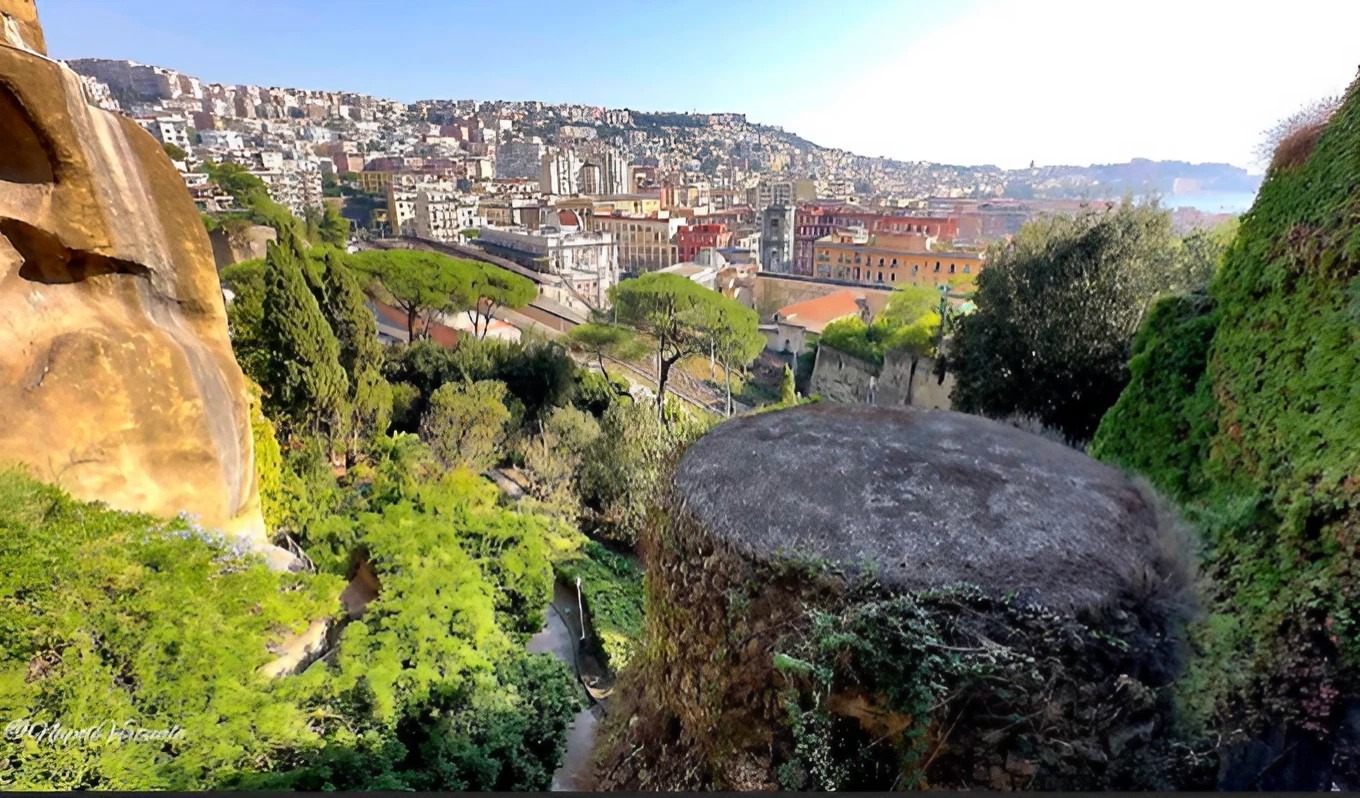
The Tombs of Leopardi and Virgil are found in the Vergian Park of Piedigrotta, which should not be confused with the Virgilian Park of Coroglio. It is famous because it contains the remains of these two great poets and the funeral monument of Leopardi is the one that stands out most. In fact, it consists of a large ara in which the name of the poet is engraved, while on the side there is a stele with the signature of King Vittorio Emanuele III which attests to its authenticity. The third element is a plaque with a sanction of King Umberto I, which makes it a national monument.
La Tomb of Virgilinstead, it is a Roman columbarium with an inscription by Petrarch that invites the visitor to stop.
Where is it: Ascent of the Cave - 80122 Naples
National Library
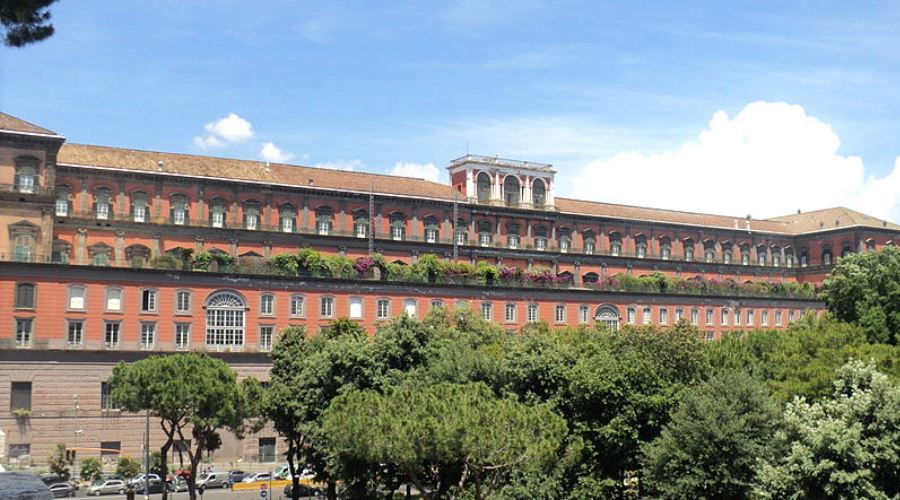
The Vittorio Emanuele III National Library is located inside the Royal Palace of Naples and contains thousands of volumes and precious collections, many of which are private. It is estimated that there are 19000 manuscripts, 4563 incunabula, 1792 papyrus ercolanesi, 1800000 printed volumes and more than 8300 periodical newspapers. Some are also kept manuscripts of Giacomo Leopardi.
Admission is free every day, both for citizens and for foreigners, provided they have completed 16 years and are in possession of an identity document. The rooms are frescoed and decorated in different styles, including the Pompeian, and there are also many busts, the result of private donations.
Where is it: Piazza del Plebiscito, 1 - 80132 Naples
Wood of Capodimonte
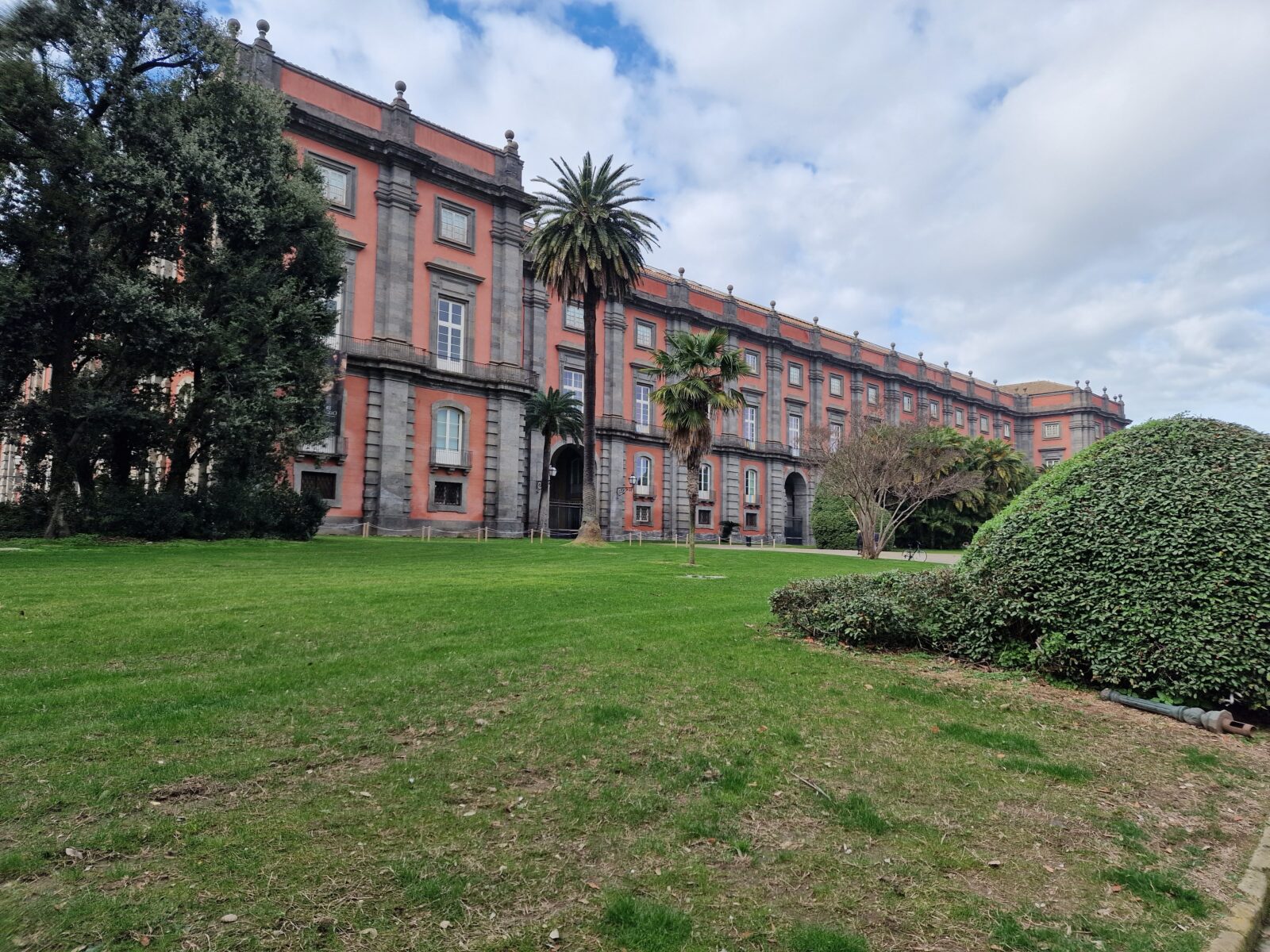
The Real Bosco di Capodimonte is the largest park in the city and is located adjacent to the homonymous palace. It was used by Charles of Bourbon as a hunting reserve since 1735 and became a public park only in the 60 years of the 900.
It is the ideal green area for those who want to spend a few hours relaxing walking and resting, but also for those who want to do sports or a bike ride.
It is a typical English garden and teeming with old trees like elms, oaks, linden and holm oaks.
Trip planning
- Public transport: The bus remains the main option to reach Bosco di Capodimonte. Check available timetables and lines to best plan your trip.
- By car:: If you prefer to go by car, consider parking in parking areas slightly away from the forest as they are much cheaper than those right next to it
During the visit
- Exploration: The Capodimonte Forest offers various paths for nature walks, picnic areas and panoramic points from which to admire the city from above.
- Museum of Capodimonte: Don't miss the opportunity to visit the museum, which houses a rich collection of works of art.
- Regulations: Respect the rules of the Forest, especially regarding the collection of plants or the disturbance of wildlife.
- Dogs are prohibited from entering most areas and from trampling on flowerbeds.
Useful Tips
- Equipment: Bring water, food and wear comfortable walking shoes. The large green spaces are perfect for a picnic.
- Photography: The natural areas and panoramas offered by the Forest are ideal for photography enthusiasts. Always remember to respect your surroundings.
Where is it: Via Miano, 4 - 80145 Naples
Floridiana
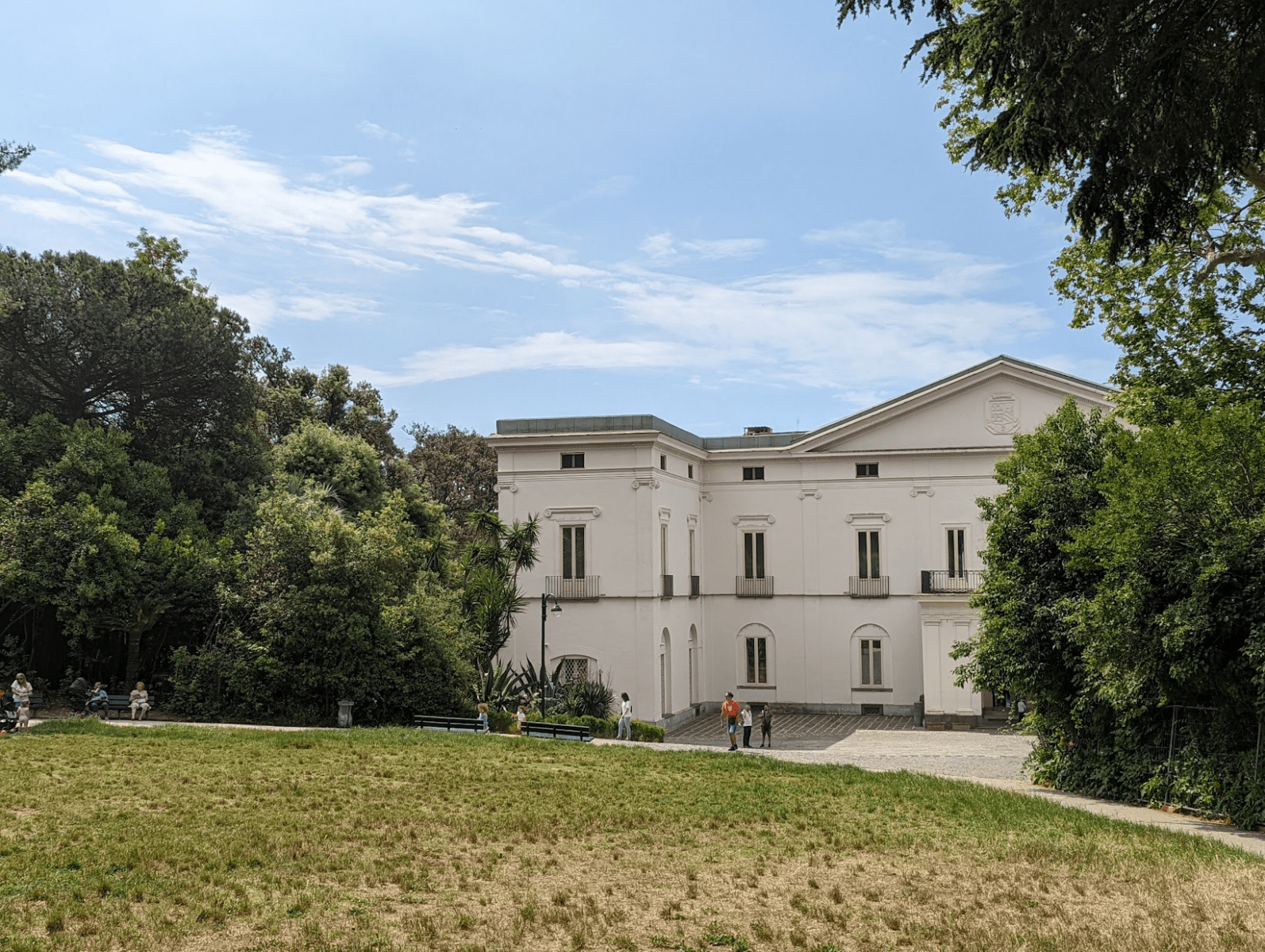
La Floridiana is lgreen area of the Vomero district and takes its name from the homonymous villa inside, named after the wife of Ferdinando IV di Borbone, Lucia Migliaccio, Duchess of Floridia. It is made up of many paths and thickets and there are numerous camellia trees.
It is a mixture of an Italian and an English garden and there is a large green lawn for walking, lying down and playing. Towards the end of the various paths, we reach the beautiful Belvedere that allows you to admire a fascinating view of Naples.
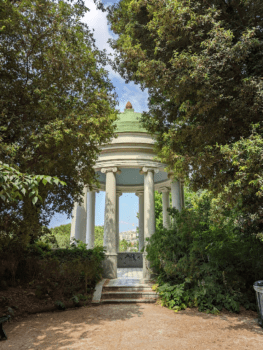
Open from 08:00 to 16:30 in the winter months (from 1 November to 31 March) and from 08:30 to 19:30 in the summer months (from 1 April to 31 October).
How to Get There:
Villa Floridiana is easily accessible thanks to its location in the Vomero district, one of the most elegant and lively in Naples. Use the subway it can be an excellent choice to easily reach the villa, avoiding city traffic.
- Metropolitan: The nearest metro station is “Vanvitelli”, served by Line 1. From here, Villa Floridiana can be reached with a short walk, allowing you to immerse yourself in the atmosphere of the neighborhood.
- Parking: If you choose to arrive by car, it is useful to know that i parking lots in the area they have quite high rates
Visit
- Opening hours: Unfortunately sometimes the park is closed early by the staff without a clear explanation. Before leaving, it is advisable to get started so as not to arrive too close to closing time.
- Explore the park: The vast park offers quiet green corners, ideal for relaxing walks or outdoor picnics, but it is not well maintained, so be careful of slippery areas.
- Duca di Martina Museum: Don't miss the decorative arts collection housed inside the villa, a true treasure of ceramics, glass and other art objects.
Helpful tips
- Preparation: Wearing comfortable shoes can make your visit even more enjoyable, especially if you want to explore all of the park's trails.
- Photography: The villa offers wonderful photography opportunities, but it is always good to check the rules regarding camera use inside the museum.
After the visit
- Walk to Vomero: Take advantage of your presence in the neighborhood to explore the surroundings, full of shops, cafes and restaurants.
Where is it: Via Domenico Cimarosa, 77 and Via Aniello Falcone, 171 - 80127 Naples
PAN - Palace of the Arts of Naples

The Palazzo delle Arti in Naples is a museum that is located from 2005 in the Palazzo Carafa di Roccella. Together with the Mother Museum, it hosts both collections and exhibitions of contemporary art and it is always free admission, with the exception of some more significant temporary exhibitions.
It often organizes too conferences, seminars, meetings, book presentations and film reviews, giving space to many emerging talents. It is one of the points of reference for many Neapolitan and non-Neapolitan associations and artists, a cultural center in continuous ferment.
Where is it: Via dei Mille, 60 - 80121 Naples
Visit to the Cathedral of Naples
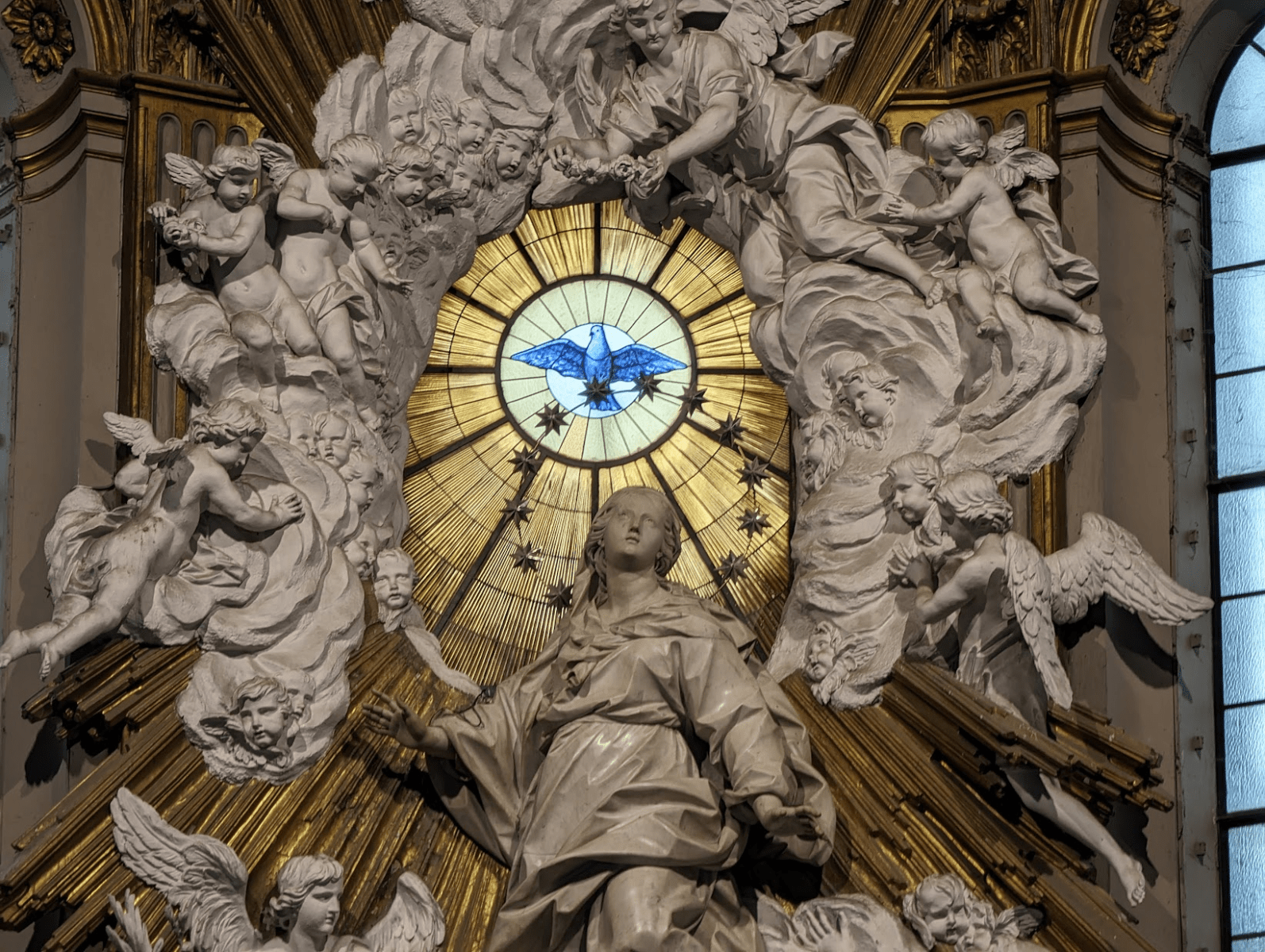
The metropolitan cathedral of Santa Maria Assunta, better known as the Duomo, is the most important basilica in the city and incorporates two other churches: the Basilica of Santa Restituta and the Chapel of the Treasure of San Gennaro. The Cathedral, in reality, is the overlap of various religious buildings that have arisen since the 4th century.
The exterior is a mixture of architectural styles, from Gothic fourteenth-century Neogothic 1800. Inside there are 3 naves and 10 side chapels, the seventeenth-century ceiling is in wood and gilded coffered and there are various paintings by Luca Giordano. The Cathedral of Naples is visited for free, only the early Christian Baptistery is paid.
Tips for visiting the Cathedral of Naples
- Special events: Before planning your visit, check if there are religious events at the Duomo, especially during religious holidays or special events, as it can be really difficult to reach it on some days, for example when there is Miracle of San Gennaro.
- Apparel: Remember to wear appropriate clothing to respect the sacredness of the place. It is advisable to cover shoulders and knees.
The dates of the Miracle of San Gennaro
- September 19th
- First Saturday in May
- 16th December
During the visit
- Chapel of San Gennaro: Don't miss the treasure chapel, where the relics of San Gennaro are kept. The chapel is a true artistic and spiritual jewel.
- Artwork: The Cathedral houses numerous works of art, including frescoes, sculptures and paintings of inestimable value. Take the time to admire them.
- Crypt and Baptistery: Explore the underground crypt for a dive into history and mysticism. The Baptistery of San Giovanni in Fonte, one of the oldest in the Western world, is unmissable.
Practical advice
- Silence and respect: Maintain a respectful attitude and a moderate tone of voice inside the Cathedral, especially during liturgical celebrations.
- Photography: If you wish to take photographs, check the Duomo rules first. In many sacred places, the use of flash is prohibited.
After the visit
- Explore the surroundings: The Duomo is located in the historic center of Naples, an area rich in history, art and gastronomy. Spend time discovering the surrounding streets and their hidden treasures.
Where is it: Via Duomo, 149 - 80138 Naples

